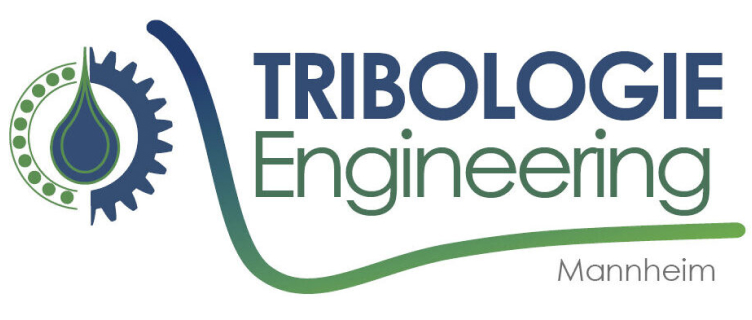back to blog overview
Fretting: Invisible Mechanism, Visible Damage
Two metal surfaces that appear to be stationary but are oscillating slightly – due to vibrations or thermal expansion, for example. These tiny movements (sometimes only a few nanometers!) lead to adhesion at surface asperities, which then break apart again and form wear particles.
In tribology, fretting describes the combination of locally high mechanical stress and relative motion between surface areas that remain in constant contact. Under these conditions, metals can form oxides and, in the case of ferrous materials, behave like corrosion with rust-colored particles. Due to the high stress at the contact points, protective passive layers are continuously damaged by high-frequency micro- or nano-movements. The result: exponentially accelerated material loss that far exceeds what would be expected from wear or corrosion alone.
What happens at the surface?
Due to the smallest oscillating relative movements between otherwise static or minimally moving contact partners, adhesion bridges form and break, exposing unpassivated material. Freshly exposed metal reacts immediately with oxygen or surrounding media forming a new reaction layer, which is then sheared off again during the next micro-movements. The detached particles act as abrasives and intensify damage and material loss, often visible as “fretting corrosion” (also known as “fit rust”).
Typical practical examples include shaft-hub connections, bearing seats, spline shafts, multi-tooth shafts, and interference fits (especially in high-load applications such as wind turbines, both onshore and offshore). Sealing points and valves in the chemical industry, as well as electrical plug connectors, are also classic victims of fretting.
The planar-contact fretting test rig “BigFret,” developed by TEMa and equipped with an in-situ camera, makes it possible to observe the formation and degradation of tribological layers in time-lapse. This enables targeted measures to be derived — such as the selection of suitable coatings, the use of solid lubricants, or the optimization of contact surfaces. The video above, for example, shows a test using a “LowRef” dry film lubricant — a coating with known poor anti-fretting performance, which can be used in comparative studies. In the lower part of the video, you can see the recordings of the lower and upper specimens. At the top left, sensor measurements are shown (friction force in black, normal force in blue, temperature in green), and at the top right, the friction force hysteresis. The video shows an early layer breakdown with the onset of corrosion and corresponding particle formation after around 7 hours. The tests are conducted at 1,000 N normal force and an absolute stroke of 200 µm.
What can you do against fretting? Take steps to avoid it!
In cases of micro-oscillating motion between seemingly static machine elements, conventional lubrication concepts quickly reach their limits. While liquid lubricants are displaced from narrow contact gaps, suitable solid lubricants can provide long-term protection. The choice of solid lubricant, in turn, has a decisive impact on performance. Calcium-based compounds often show better long-term behavior under fretting conditions than classic layered structures such as graphite or MoS₂ [1]. For example, fretting damage with CaSO₄ lubrication was only observed after 180 hours — whereas with graphite, it occurred after just around 4 hours.
An effective anti-fretting layer is characterized by several key properties: it forms stable tribological layers through reaction with the iron surface; local damage is compensated by the regeneration of these layers; and it is thermally stable — meaning no degradation of the layer occurs, even at extreme frictional temperatures.
It is important to note that the underlying metal is not just a substrate for the solid lubricant, but actively interacts with it. This interaction influences the formation of tribo-layers and therefore plays a crucial role in the effectiveness of wear protection. As such, the solid lubricant must always be selected in the context of the entire system.
Our recommendations for practical application
Potential micro-movements and their consequences should already be considered during the design phase.
Standard lubrication solutions should not be applied indiscriminately — the chemical-physical compatibility between the material and the lubricant is often critical.
Regular inspection and critical analysis of the performance of solid lubricant systems under real operating conditions is essential.
In the second video, by the way, you can see a very well-performing dry film lubricant that shows no signs of fretting even after 48 hours of operation.
[1] 𝘉𝘶𝘴𝘦, 𝘏.; 𝘚𝘤𝘩𝘶𝘦𝘭𝘦𝘳, 𝘍.; 𝘏𝘰𝘥ú𝘭𝘰𝘷á, 𝘌. 𝘗𝘭𝘢𝘯𝘢𝘳 𝘊𝘰𝘯𝘵𝘢𝘤𝘵 𝘍𝘳𝘦𝘵𝘵𝘪𝘯𝘨 𝘛𝘦𝘴𝘵 𝘔𝘦𝘵𝘩𝘰𝘥 𝘈𝘱𝘱𝘭𝘪𝘦𝘥 𝘵𝘰 𝘚𝘰𝘭𝘪𝘥 𝘓𝘶𝘣𝘳𝘪𝘤𝘢𝘯𝘵𝘴. 𝘓𝘶𝘣𝘳𝘪𝘤𝘢𝘯𝘵𝘴 2021, 9, 58. 𝘩𝘵𝘵𝘱𝘴://𝘥𝘰𝘪.𝘰𝘳𝘨/10.3390/𝘭𝘶𝘣𝘳𝘪𝘤𝘢𝘯𝘵𝘴9060058.
